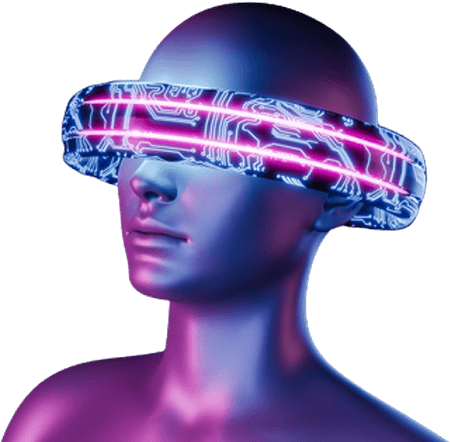Can Claude 3 be Used on Multiple Devices?
In the rapidly evolving world of artificial intelligence, Anthropic’s Claude 3 has emerged as a game-changing language model, pushing the boundaries of natural language processing and machine learning. As AI technology becomes increasingly integrated into our daily lives, users are seeking solutions that seamlessly adapt to their multifaceted digital experiences. One pressing question that arises is whether Claude 3 can be used across multiple devices, enabling users to leverage its capabilities in a truly ubiquitous manner.
This comprehensive article delves into the cross-platform potential of Claude 3, exploring the various scenarios and use cases where users might demand access to the AI language model from different devices.
We’ll examine the technical considerations, challenges, and strategies Anthropic may employ to facilitate a consistent and seamless experience across multiple platforms. Additionally, we’ll explore the potential implications and benefits of cross-device compatibility for both individual users and businesses alike.
Understanding Claude 3’s Architecture and Deployment
Before delving into the cross-device capabilities of Claude 3, it’s essential to understand the underlying architecture and deployment strategies employed by Anthropic for its AI language model.
- Cloud-Based Deployment: Like many modern AI systems, Claude 3 is likely deployed using a cloud-based architecture. This means that the core language model and its associated computational resources reside on remote servers operated by Anthropic or a cloud service provider. Users access Claude 3 through various client applications or interfaces, which communicate with the cloud-based servers to process requests and receive responses.
- Client Applications and Interfaces: To interact with Claude 3, users typically utilize client applications or web-based interfaces provided by Anthropic. These clients act as intermediaries, facilitating the communication between the user’s device and the cloud-based language model. Client applications may be available as native apps for different operating systems (e.g., iOS, Android, Windows, macOS) or as web-based interfaces accessible through modern web browsers.
- Scalability and Load Balancing: One of the advantages of a cloud-based deployment is scalability. Anthropic can dynamically allocate computational resources to handle fluctuating demands and ensure optimal performance for users across different devices and locations. Load balancing techniques distribute incoming requests across multiple servers, ensuring efficient resource utilization and minimizing potential bottlenecks or performance issues.
Cross-Platform Capabilities of Claude 3
Given the cloud-based nature of Claude 3’s deployment, the language model inherently possesses the potential for cross-platform compatibility. Anthropic can leverage various strategies and technologies to enable seamless access and interaction with Claude 3 from a wide range of devices and platforms.
Web-Based Interfaces:
One of the most straightforward approaches to enabling cross-device compatibility is through web-based interfaces. By providing a responsive and well-designed web application, Anthropic can ensure that users can access Claude 3 from any device with a modern web browser, regardless of the underlying operating system or hardware.
Web-based interfaces offer several advantages, including:
- Platform independence: Users can access Claude 3 from desktops, laptops, tablets, or smartphones running Windows, macOS, iOS, Android, or any other operating system with a compatible web browser.
- Consistent user experience: With careful design and implementation, web-based interfaces can provide a consistent and familiar user experience across different devices and screen sizes.
- Easy updates and maintenance: Updates and improvements to the web application can be deployed centrally, ensuring that all users have access to the latest features and bug fixes without the need for manual updates on individual devices.
Native Applications
While web-based interfaces offer cross-platform compatibility, Anthropic may also choose to develop native applications for popular platforms, such as iOS and Android for mobile devices, or Windows and macOS for desktops and laptops. Native applications can provide a more tailored and optimized experience, leveraging platform-specific features and capabilities.
However, developing and maintaining native applications across multiple platforms can be resource-intensive and require ongoing effort to ensure compatibility with new operating system versions and device updates. Anthropic may need to strike a balance between the benefits of native applications and the development overhead they entail.
Progressive Web Applications (PWAs)
An emerging technology that could bridge the gap between web-based and native applications is Progressive Web Applications (PWAs). PWAs are web applications that leverage modern browser capabilities to provide an experience similar to native applications, including features like offline functionality, push notifications, and seamless installation on various devices.
By adopting a PWA approach, Anthropic could potentially offer a cross-platform solution that combines the benefits of web-based accessibility with the enhanced user experience and functionality of native applications.
Cross-Device Synchronization and Continuity
Beyond simply enabling access to Claude 3 from multiple devices, users may demand a seamless and consistent experience as they transition between different platforms. Anthropic could implement various strategies to facilitate cross-device synchronization and continuity, ensuring a cohesive and uninterrupted user experience.
Account-Based Synchronization
One approach to enabling cross-device continuity is through account-based synchronization. By requiring users to create and login with an Anthropic account, the platform can maintain a centralized record of user preferences, settings, and interaction history with Claude 3.
When users switch devices, they can simply login with their account credentials, and the platform can restore their personalized experience, including any ongoing conversations or tasks with the language model. This approach ensures a consistent and uninterrupted experience, regardless of the device being used.
Cloud-Based Data Storage
To facilitate account-based synchronization, Anthropic may leverage cloud-based data storage solutions. User data, such as preferences, settings, and conversation histories, can be securely stored in the cloud and accessed from any authorized device or client application.
Cloud-based storage also enables seamless backup and recovery of user data, providing an additional layer of protection against data loss or device failure.
Real-Time Synchronization
For a truly seamless experience, Anthropic could implement real-time synchronization mechanisms that allow users to switch between devices mid-conversation or mid-task without interruption. This could involve real-time data replication and synchronization across devices, ensuring that the user’s current state is always up-to-date, regardless of the device they’re using.
Real-time synchronization can be particularly beneficial in scenarios where users collaborate with Claude 3 across multiple devices, such as working on a document or coding project simultaneously from different locations.
Authentication and Security Considerations
Enabling cross-device access and synchronization for Claude 3 introduces additional security considerations that Anthropic must address to ensure the protection of user data and the integrity of the language model.
User Authentication
Implementing robust user authentication mechanisms is crucial when enabling access to Claude 3 from multiple devices. Anthropic may employ industry-standard authentication protocols, such as multi-factor authentication (MFA) or biometric authentication (e.g., fingerprint, facial recognition), to verify user identities and prevent unauthorized access.
Secure Communication Channels
All communication between client devices and the cloud-based servers hosting Claude 3 should be encrypted and secured using industry-standard protocols like SSL/TLS. This ensures that sensitive user data and conversations with the language model are protected from interception or tampering during transmission.
Device Verification and Authorization
To mitigate the risk of unauthorized device access, Anthropic could implement device verification and authorization mechanisms. This could involve maintaining a whitelist of authorized devices associated with each user account or employing device fingerprinting techniques to identify and validate devices attempting to access Claude 3.
Data Encryption and Access Controls
User data stored in the cloud should be encrypted at rest and subject to strict access controls. Anthropic may employ techniques like data partitioning, role-based access controls, and auditing to ensure that user data is only accessible to authorized entities and remains protected from unauthorized access or modification.
Compliance and Privacy
Depending on the regions and industries in which Anthropic operates, the company may need to comply with various data protection and privacy regulations, such as the General Data Protection Regulation (GDPR) or the California Consumer Privacy Act (CCPA). Ensuring compliance with these regulations is crucial when enabling cross-device access and synchronization for Claude 3.
Use Cases and Benefits of Cross-Device Compatibility
The ability to use Claude 3 across multiple devices opens up a myriad of use cases and potential benefits for both individual users and businesses alike.
Individual Users
- Seamless Productivity: Users can seamlessly transition between devices while working on tasks or engaging with Claude 3, minimizing disruptions and maintaining productivity.
- Ubiquitous Access: Cross-device compatibility allows users to access Claude 3’s capabilities from anywhere, whether at home, at work, or on-the-go, enabling a truly ubiquitous AI experience.
- Personalized Experience: By synchronizing preferences and conversation histories across devices, users can maintain a personalized and consistent experience with Claude 3, regardless of the device they’re using.
Businesses and Organizations
- Remote Collaboration: Employees or team members can collaborate on projects or tasks involving Claude 3, seamlessly switching between devices and picking up where they left off, enhancing productivity and enabling remote work scenarios.
- Consistent Customer Experience: Businesses can provide a consistent and unified experience to their customers or users when integrating Claude 3 into their products or services, regardless of the devices their customers are using.
- Streamlined Workflows: By enabling cross-device access to Claude 3, businesses can streamline workflows and processes that involve multiple stakeholders or team members working from different locations and devices.
- Cost-Effective Deployment: Instead of developing and maintaining separate applications for each platform, businesses can leverage web-based or cross-platform solutions, reducing development costs and efforts.
Future Developments and Considerations
As AI technology continues to evolve, the cross-device capabilities of language models like Claude 3 will likely become even more advanced and seamless. Here are some potential future developments and considerations:
- Device-Agnostic Interfaces: While current interfaces may be optimized for specific device types (e.g., desktop, mobile), future interfaces could be truly device-agnostic, adapting seamlessly to different screen sizes, input methods, and capabilities, providing a consistent experience across all devices.
- Ambient Computing and Ubiquitous AI: With the rise of ambient computing and the Internet of Things (IoT), AI assistants like Claude 3 may become integrated into various devices and environments, enabling users to interact with them through natural language inputs, regardless of the device or context.
- Edge Computing and On-Device Processing: While the current deployment of Claude 3 is likely cloud-based, advancements in edge computing and on-device processing could enable more efficient and responsive interactions, potentially mitigating latency issues and enabling offline functionality.
- Voice and Multimodal Interfaces: As voice-based interfaces and multimodal interactions (combining voice, text, and visual inputs) become more prevalent, Anthropic may need to adapt Claude 3 to support these emerging interaction modalities across different devices.
- Personalization and Adaptability: Future iterations of Claude 3 could become more personalized and adaptive, tailoring their responses and behavior based on individual user preferences, usage patterns, and contextual information gathered across multiple devices.
Conclusion
The ability to use Claude 3 across multiple devices is a critical consideration in the modern age of ubiquitous computing and digital experiences. Anthropic’s adoption of cloud-based deployment strategies and web-based interfaces lays a strong foundation for enabling cross-platform compatibility for its AI language model.
However, truly seamless cross-device experiences require more than just accessibility. Anthropic must implement robust synchronization mechanisms, secure authentication protocols, and stringent data protection measures to ensure a consistent, secure, and compliant user experience across all devices.
As AI technology continues to evolve, the cross-device capabilities of language models like Claude 3 will become increasingly crucial, enabling users to seamlessly integrate these powerful tools into their daily lives and workflows, regardless of the devices they use.
By addressing the challenges and considerations outlined in this article, Anthropic can position Claude 3 as a trailblazer in the realm of cross-platform AI experiences, empowering individuals and businesses alike to harness the full potential of this cutting-edge language model in a truly ubiquitous manner.
Related


